#saint ambroise
Photo

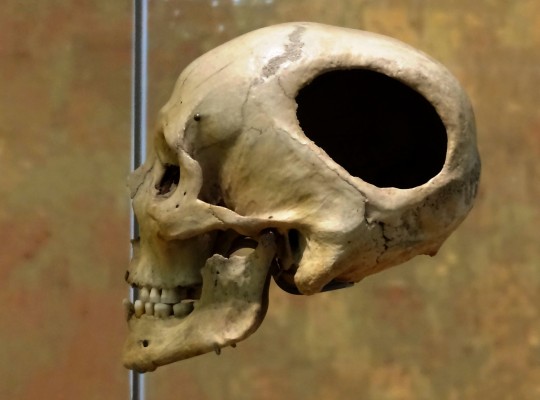


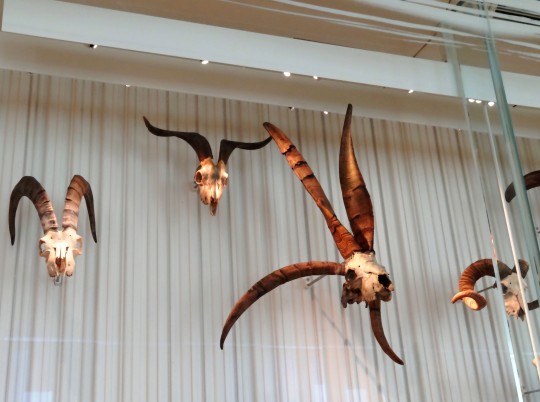


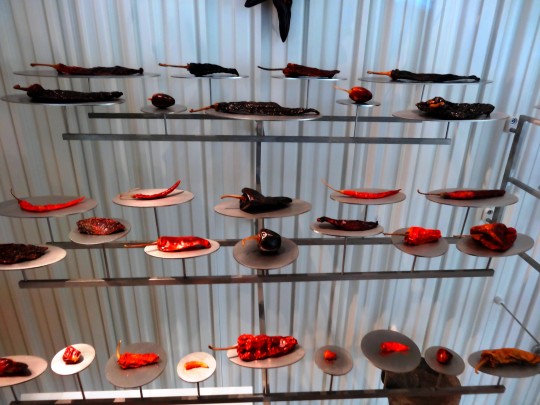

Je reviens à mon projet de présenter la plupart de mes 55000 photos (nouveau compte approximatif. On se rapproche du présent !).
2016. Une journée à Paris. Le Musée de l’Homme:
- Saint Ambroise, ruche - Pays-Bas
- crâne trépané de gaulois bellovaque - Oise, environ -1000av.J-C.
- statuette, Ugarit
- démon chrétien - Papouasie
Pour le reste : variété de chèvres élevées et de piments cultivés, yourte, minibus africain et prothèses...
#souvenirs#paris#musée de l'homme#archéologie#celte#bellovaque#gaulois#trépanation#saint ambroise#ruche#ruche en osier#ugarit#démon#diable#monstre#papouasie#chèvre#piment#cultivar#race#yourte#minibus#prothèse#jambe de bois
2 notes
·
View notes
Text


Local cult leader taking a nap with his associate/god on Earth
#it's tiring leading a bunny cult all by yourselves#my art#mth3gr34t#oc#ocs#original character#oc : Agape#oc : Julien Ambroise “Saint” Meyer#cyberpunk 2077 oc
3 notes
·
View notes
Photo

1 note
·
View note
Text

#33-35 Rue Saint-Ambroise#Paris (11th Arr.)#designed by Roger Anger#Mario Heymann and Pierre Puccinelli in 1969. The building is characterized by south-facing apartments and loggias of differing depths. [135
0 notes
Text
Arthurian myth: Merlin (1)
Loosely translated from the article "Merlin" of the Dictionary of literary myths, under the direction of Pierre Brunet.

The literary fortune of Merlin was often dependent of the Arthurian literature. However, through its various resonances, the character gained its own seduction and its own popularity that allowed him to return outside of a medieval setting, gaining the status of an autonomous literary myth. He was at first the prophet of the Briton revenge, the one who had initiated the Round Table and who had inspired the errant-knighthood. Through his unique position between good and evil (he is born of a devil and a virgin), between life and death (his paradoxical survival within a “prison of air” or his vault), he embodies in modern times the enigma of History and of the future. Finally, he is the enchanter: causing or suffering many metamorphoses, he is a mythical builder and engineer, and sometimes a warlock/sorcerer. Merlin stays one of the prime heroes of the world of magic.
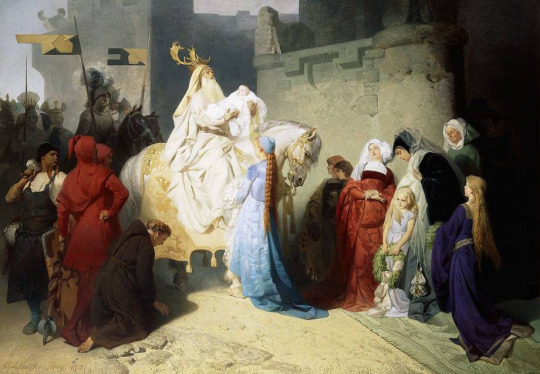
I/ Origins
The name and the character of Merlin appear for the first time within two Latin-written works of the second quarter of the 12th century, by the Welsh cleric Geoffroy of Monmouth: the “Historia Regum Britanniae” (1136) and the “Vita Merlini” (1148).
Nothing allows us to claim that a character named Merlin (Myrddin in Welsh) existed before these works. The very name of Merlin might have been an invention of Geoffroy, based on the name of the city of Kaermyrddin (today’s Carmarthen). It is also possible that Geoffroy used the phonetic similarity between the city and a “Merlin(us)” which belonged to the Armorican tradition (or more largely the continental one). However, Geoffroy of Monmouth did not start out of nothing. In the middle of the 12th century, Robert of Torigny, library of the abbey of Bec, claimed that two Merlin existed: a Merlin Ambroise/Ambrose (Ambrosius Merlinus) and a Merlin Sylvestre/Sylvester (Merlinus Silvester). This opinion was renewed thirty years later by Giraud of Cambria. Thes two names seem to correspond to two different traditions that Geoffroy joined:
1) “Merlin Ambrose” designates a character of the 6th century named Ambrosius. Gildas (in his “De Excidio et conquest Britanniae) made him the descendant of a Roman consulate family. Nennius( “Historia Britonum” presented him as a child born without a father, and whose mother had sex with an incubus – a tradition maintained by posterior authors. Nennius also provided the motif of the child revealing to the king Guorthigirn (Vortigern) the existence of two underground dragons preventing the building of his citadel. Discovered by the agents of the king at Kaermyrddin, the young Ambrosius interpreted the battle of the monsters as the omen of the long battles between the Briton and the Saxon. When Geoffroy retells this scene, he explicitly identifies Merln to this Ambrosius (“Merlinus, qui et Ambrosius dicebatur”).
2) “Merlin Sylvester” appears mainly in the “Vita Merlini”, and he seems to be the heir of older Celtic traditions. These traditions, shared by both Scotland and Ireland, depict a prince who lost his sanity and ran away into the forest, living there a wild existence while gaining supernatural powers. In Scotland it is Lailoken, known through the “Life of saint Kentigern”: on the day of the battle of Arfderydd (located by the “Cambriae Annals” at 573), this character, companion of the king Rodarch, heard a celestial voice condemning him to only have interactions with wild beasts [Translator’s note: The expression in French here is unclear if it speaks of human interactions or having sex, and I unfortunately can’t check the original Life of saint Kentigern right now]. Several predictions were attributed to him, predictions that the “Vita Merlini” places within Merlin’s mouth. Another incarnation of the “Merlin Sylvester” can be find back as early as the 8th century: in Ireland, the legendary king Suibne, turned mad after the battle of Moira, lived in trees (from which he ended up flying away), and shared similar traits with Lailoken. Similarly, in the Armorique there was the prophet Guinglaff, known through a verse-work of the 15th century “Dialogue entre le Roi Arthur et Guinglaff”.

The link between Merlin and those “wild men” becomes even more apparent thanks to several Welsh poems bearing the name “Myrddin”. Three of them belong to the “Black book of Carmarthen” (Welsh manuscript of the end of the 12th century) : The Apple-Trees (Afallenau), the Songs of the Pigs (Hoianau) and the Dialogue between Merlin and Taliesin (Ymddiddan Myrddin a Thaliesin). If the prophetic passages of these texts cannot be older than the Normand invasion, several lines where the bard talks to the trees and animals of the Caledonian forest (especially his pet-boar), complaining about his loneliness and his sorrow, could be the remains of a poem between 850 and 1050, which could be the oldest record of the Merlin legend.
Despite these many obscure origins, it seems that even before the publication of the “Historia Regum Britanniae” Merlin had awakened a certain interest within Geoffroy’s entourage, since Geoffroy decides to publish in 1134, due to the demands of several people including the bishop of Lincoln, a fragment of an unfinished work of his: the “Prophetiae Merlini”. Inspired by the Books of the Sybil, by the Apocalypse and by the prophetic imagery of Celtic and Germanic tribes, these “Prophecies”, that Geoffroy claimed to have translated from the language of the Briton, is first a record of several events that happened in Great-Britain since the Saxon invasion until the reign of Henry the First. Then, they announce in an obscure fashion the revenge of the Briton, and a series of disasters prefacing the end of the world. This text was a huge success: until the end of the Middle-Ages, these “Prophecies” were commented and quoted as equals to the holy Christian books. Alain of Lille, the “Universal Doctor”, wrote a commentary of the Prophecies in seven books. Merlin, first the great prophet of Wales, then of Scotland, was adopted in the 14th century by the England, which completely forgot the anti-Saxon origins of the character, and took the habit of beginning almost every speech by quoting a Prophecy of Merlin.
The ”Historia Regum Britanniae”, after the story of the two underground dragons and the text of the Prophecies, attributes to Merlin the building of Stonehenge, in the memory of Briton princes treacherously killed. Finally, it tells of how the prophet gave to the king Uter Pendragon magical potions that gave him the appearance of the husband of the duchess Ingern. A trick that allow the birth of the future king Arthur. As early as this first work, Merlin appears at the same time as a prophet and a wizard: a character claims that no one can rival with him when it comes to predicting the future, or accomplish complex machinations (“sive in futuris dicendis, sive in operationibus machinandis).
The ”Vita Merlini”, told in verse, completes Merlin’s biography by telling adventures of a very different tonality. Seer and king in the south of Wales, Merlin became mad after a deadly battle, and lived in the woods like a wild beast. Only the music of a zither can appease him. Led to the court of king Rodarch, chained in order to be kept there, he proves his gift of second sight throughout several “guessing scenes”. Before returning to the woods, he agrees to letting his wife Guendoloena marry again. However, on the day of the wedding, he appears with a horde of wild beasts, riding a stag. Ripping one of the antlers of his ride, he uses it to break the head of Guendoloena’s new husband. The rest of the text depicts Merlin as being saved by his sister Ganieda: he performs a series of astronomical observations and makes prophecies about the future of Britain. His disciple Thelgesin (identified with the Welsh bard Taliesin), back from the Armorique, joins him and they talk lengthily about nature. Finally, Merlin regains his sanity thanks to the water of a stream that just appeared, but he refuses to rule again and stays faithful to the forest.
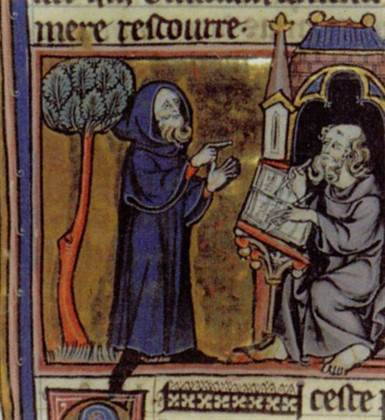
18 notes
·
View notes
Text
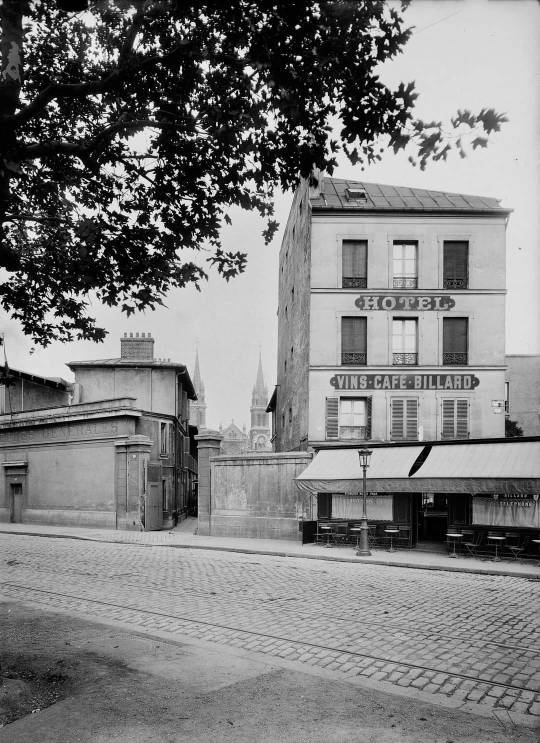
Charles Lansiaux
64-66 boulevard Richard Lenoir
À l'arrière-plan, flèches de l'église Saint-Ambroise.
Paris 1920
34 notes
·
View notes
Text

9 avril 1933, dimanche des Rameaux, vente de buis devant l'église Saint-Ambroise à Paris.
16 notes
·
View notes
Text

here is the restaurant I have chosen for my birthday which will take place in November. I started putting money in my envelope.
As I told you, I decided to treat myself now after all my problems, it's time to treat myself.
23 notes
·
View notes
Text


Léon Melchissèdec (1843-1925) and Speranza Engalli as, respectively, S.te Croix and Meala in Victor Massé's "Paul et Virginie". This is one of the very many photos made in the Atelier Nadar on the occasion of the creation of this title, at the Théâtre Lyrique in November 1876.
Melchissèdec sang at the Paris Opéra from 1879 to 1891, and again from 1905 to 1912.
The Russian-born mezzo-soprano Speranza Engalli (b. 1848; d. ?) made her début in 1875 as Maddalena in Rigoletto, was to have a relatively short but brilliant career, later appearing at the Théâtre-Italien and the Opéra-Comique, as Carmen and as Eros in Psyché by Ambroise Thomas (1878), then at the Paris Opéra (Palais Garnier) as Amneris in Verdi’s Aida (1882). After her success as Marpha, she received high acclaim as the slave Méala in Victor Massé’s three-act opera Paul et Virginie (libretto by Michel Carré and Jules Barbier, based on the famous work of the same name by Bernardin de Saint-Pierre), when it was premièred at the Théâtre National Lyrique on 15 November 1876. Speranza Engalli appears among the musical personalities mentioned by Marcel Proust in À la recherche du temps perdu (Sodome et Gomorrhe).
#opera#classical music#music history#bel canto#composer#classical composer#aria#classical studies#Léon Melchissèdec#Melchissèdec#baritone#Paris Conservatoire#Opéra-Comique#Paris Opéra#classical musician#classical musicians#classical history#musician#musicians#chest voice#maestro#diva#prima donna#classical#historian of music#classical singing#classical singer#opera singer#Speranza Engalli#mezzo soprano
14 notes
·
View notes
Quote
Personne ne guérit en blessant l'autre.
Saint Ambroise
19 notes
·
View notes
Text

4 notes
·
View notes
Photo


Intérieur de l'Eglise Saint-Ambroise conçue par l’architecte Théodore Ballu (1863), Paris, amrs 2023.
5 notes
·
View notes
Text
Sapin électrique à l'éclairage économique, décoration noëlienne éclairant la fresque en trompe-l'œil, représentation du Puy-Saint-Ambroise
2 notes
·
View notes
Text
"L'action de grâce est le premier de nos devoirs."
Saint Ambroise

1 note
·
View note
Text
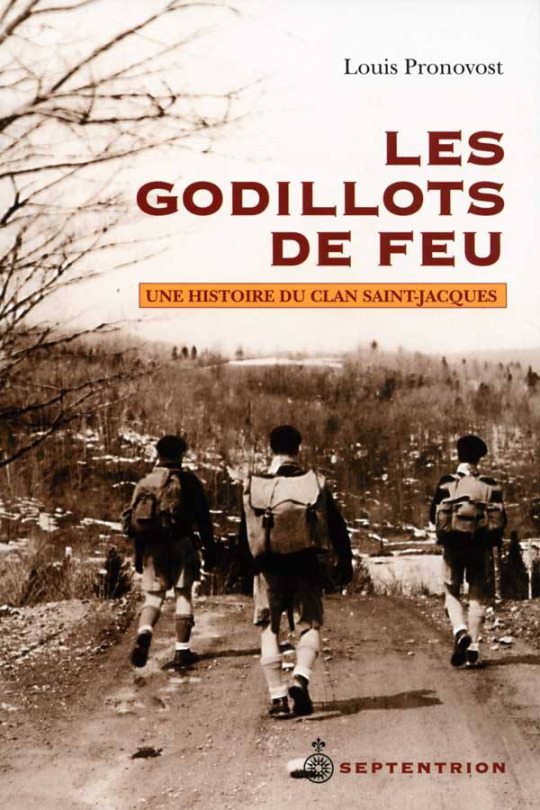
Montréal, 1938. Quinze jeunes scouts montréalais choisissent de vivre l’expérience de la « Route ». En vrais scouts, ils s’adonnent à des activités de plein air, ils dorment sur la dure, parcourent le monde, font du théâtre et beaucoup de bénévolat dans leur communauté. Mais, comme ils ont choisi d’être routiers, ils partent régulièrement, godillots aux pieds, et ils marchent de longues heures, dans le but de s’entraîner à la vie rude, frugale et simple, de devenir… présentables dans un salon et indispensables dans un naufrage. Après tout, on est sur la route que pour marcher en avant !
C’est la vie rude certes, mais c’est aussi une vie agréable faite de camaraderie, d’entraide, d’exploits musclés, une vie où, sans drogue et sans violence, on peut imaginer une discipline très efficace pour affronter l’avenir. Le clan Saint-Jacques attirera d’ailleurs près d’un millier de garçons pendant un quart de siècle. S’y joindront des personnalités, tels le père Ambroise, Gaston Miron, Jean-Paul Riopelle, Jacques Parizeau, mais aussi des jeunes de tous les milieux, sans discrimination, sauf celle de se distinguer des « mous ».
3 notes
·
View notes
Photo

Saint Ambroise, 2019
#streetphotography#analog photography#analogonly#yashicamat124g#expired film#winter paris#Paris#tourisim#church
3 notes
·
View notes